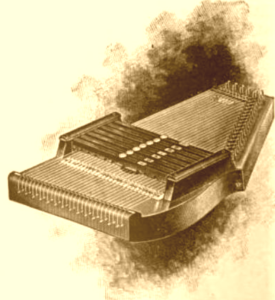 Gow, Lament for the Death of His Second Wife
Gow, Lament for the Death of His Second Wife
Back in elementary school, we had an itinerant music teacher who often played the autoharp. It was a practical instrument: good volume, full harmonies, and easy to carry. I remember being somewhat intrigued by it—as I was with most any musical instrument—but it didn’t seem to offer many possibilities or require much skill.
But there are things one can do on an autoharp that I hadn’t heard, and as I was looking for a good version of this Scottish lament, I came across Will Smith’s video.
Niel Gow (1727-1807) gained fame as a Scottish fiddler and enjoyed the patronage of the Duke of Atholl. He composed many dance tunes that form an important part of the Scottish country dance genre.
After the death of his first wife, with whom he had five sons and two daughters, Gow married Margaret Urquhart in 1768. Upon Margaret’s death in 1805, Gow reportedly put his fiddle away. When he picked it up again, the story goes, it was to compose this Lament.
The tune remains one of the most popular in the genre. You can find many online performances on a variety of instruments. The genre gained much popularity through “Ashokan Farewell” used in Ken Burns’ The Civil War television series. “Ashokan Farewell” became so strongly identified with Burns’ documentary that people assume it is an authentic tune of the time. In fact, it was composed by the American folk musician Jay Ungar in 1982 very much in the style of Gow’s Lament for the Death of His Second Wife.
The autoharp works on a simple principle. It has a series of bars that mute certain strings when depressed. So when you press the bar marked “A,” you eliminate all the strings that are tuned to notes not in the A major chord. Too easy, if that’s all you do. Charles Zimmerman obtained a U.S. patent on a similar device in 1882, but the autoharp we know today comes from a German design of 1883 by Karl August Gütter. Called a Volkszither, it indeed belongs to the family of zithers, a term that stretches back to the Latin cittern and the Greek cithara. It describes any instrument consisting of many strings stretched across a thin, flat body.



